A sparkling sink, a fluffy rug, a sparkling clean bathroom - a housewife's dream. But a bar of soggy soap spoils the look and mood. How to deal with slippery jelly? The main reason is contact with water; if the soap dries quickly, its surface will not become limp. The fragrant piece will be spent much more economically. The main task is to keep it away from water so that air flows from all sides. Even a novice housewife can easily solve the problem if she adopts one of the methods.
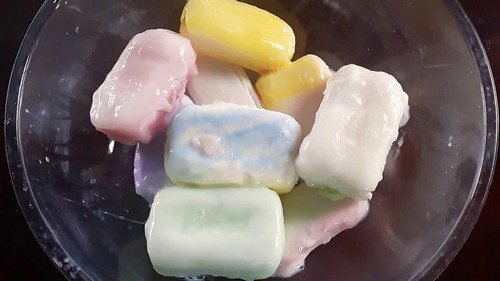
Method 1
The main enemy of soap during storage is water; you need to make sure that after use a puddle does not form under the bar. Water will flow down if there are holes in the bottom of the soap dish.
Plus: the goal is achieved, the bar of soap is kept dry.
Minuses:
- soapy water will gradually clog the holes, you will have to clean it often;
- a tray is required so that dripping smudges do not stain the sink;
- It is necessary to periodically pour out the accumulated water and rinse the pan.
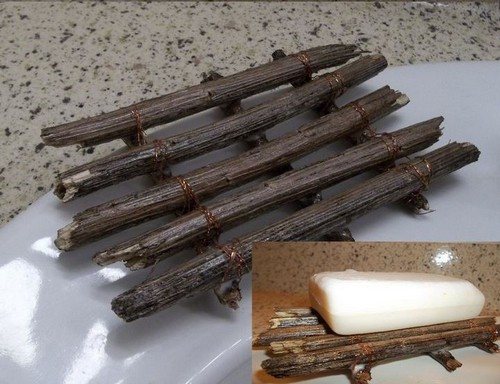
90% of soap dishes sold in stores have a design with holes. You can make an original version with your own hands: from plastic, polymer clay, or bamboo sticks. When using wood, you need to coat the product with waterproof varnish 2-3 times, because you will have to rinse it often.
Method 2
If the soap is raised above the level of the bottom of the tray, it will not come into contact with water. To do this, there must be protruding parts at the bottom on which the bar of soap, damp after use, rests.
The advantage is that the design does not require a pallet.
The disadvantage is the same as in the first method: soapy water will dry out and an unsightly coating will form.
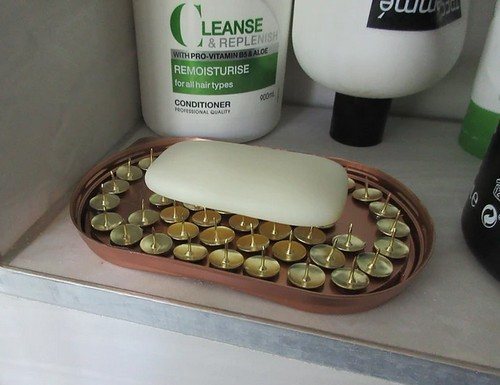
A soap dish of this design is easy to buy. You can make it yourself, it will take a couple of hours. How do you like the option of using pushpins and a lid from a plastic container? Inexpensive, but very effective. The lid is spray painted and the buttons are secured with a glue gun.
Method 3
A simple, almost free method that does not require skilled hands. Place a sponge pad on the bottom of the soap dish. The sponge will absorb water and the soap will dry quickly.
Pros:
- cheap, fast;
- a soapy sponge is useful for wiping the sink; even the remaining soapy water will be beneficial and save detergents.
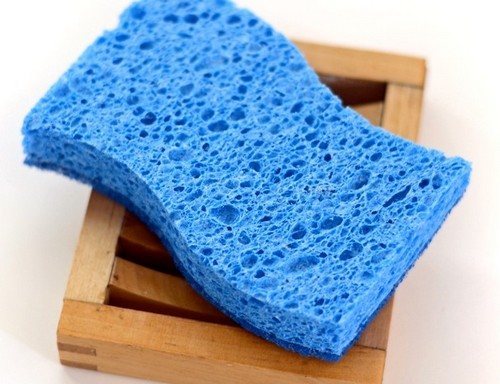
Minus: you'll have to rack your brains so that the sponge doesn't spoil the look.
Choose a sponge of a suitable color, carefully cut it to the shape of a soap dish - such a backing will be invisible and will not spoil the design of the bathroom.
Method 4
On a magnetic soap dish, a piece of soap floats in the air and dries instantly. How it works: a small metal disk is pressed into the middle of the piece, and a magnetic holder securely holds the fragrant bar.
Plus:
- saving space;
- no need to constantly wash the tray.
Minus: immediately after use, drops may still drip onto the sink, you will have to wipe it off.
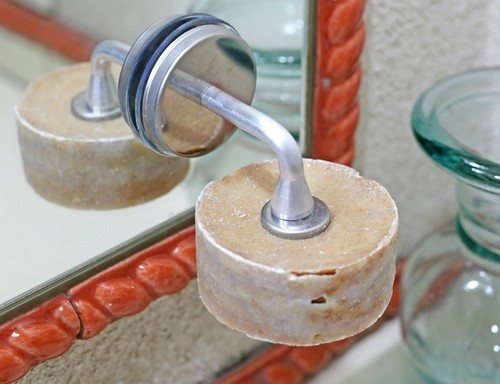
The finished magnetic soap dish consists of a holder and a metal element for a bar of soap. Using the same principle, you can build a whole gallery of multi-colored pieces if you use a magnetic strip for kitchen knives and metal plugs.
Method 5
The original way is to do without a soap dish altogether. If the soap is made in the form of a ring, you can simply hang it on a hook. The idea was patented by a British designer in 2004.
Plus: the task of keeping it dry is done perfectly.
Disadvantage: for this method you need to buy or make soap of a special shape.

The method is not suitable for everyone. But the popular hobby of soap making today will make lovers think about purchasing a mold in the form of a ring. An unusual solution will be the subject of admiration for guests.
So, the problem of “how to keep soap dry” has many solutions: cheap and expensive, quick and time-consuming. Housewives choose.









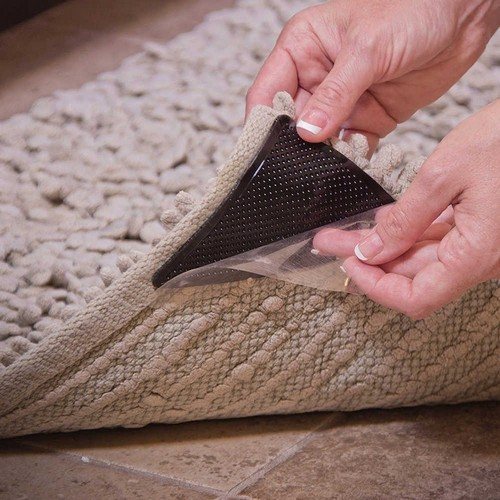
Almost all methods have disadvantages: 1. the disadvantages are described in the article, but it cannot be made from wood at all, it will get wet. 2. The most correct way, but it is not described how to do it. 3. The sponge does not allow water to dry out the bottom part of the soap and it will become limp, and the sponge itself will have to be washed frequently. 4. The magnet is good (as is method 2), and the indicated drawback - dripping of soap drops - is insignificant and easily eliminated. 5. The method can be applied to any piece of soap - just drill a hole in it with a knife. The disadvantage is that you will need to wash the hook quite often, because...it will be covered in soap that will stick when you take it off and put it on.
The best way to keep soap from getting soggy is to use a soap dish shape that allows excess water to drain into a recess in the center or along the entire bottom surface. This is done in some stationary soap dishes - the soap rests along the annular surface, and the water flows into a recess in the center.
Another way I came up with was to put a plastic container from ampoules for injections into the soap dish. Equivalent to lids. But transparently and neatly
There was another way. Plastic soap holders have been produced for a very long time. Slightly larger than a soap magnet and slightly convex, the soap barely touched the surface, and the rough surface of the pad allowed dirt on skin or fabric to be rubbed for faster removal.
You just need to make soap the way it was made before - there simply WASN'T such a problem with soap becoming soggy, unless, of course, it was left in water, but stored in a soap dish. Now, any soap, regardless of price, in three or four days turns into a vile substance and falls apart in your hands, while before the bar was washed away to the state of a thin petal.
It’s all about the correct production technology, which no one is going to follow nowadays, since the manufacturer is interested in selling more goods - and the faster the soap runs out, the faster we will run for a new piece. That's the whole secret. So, make some soap, gentlemen!